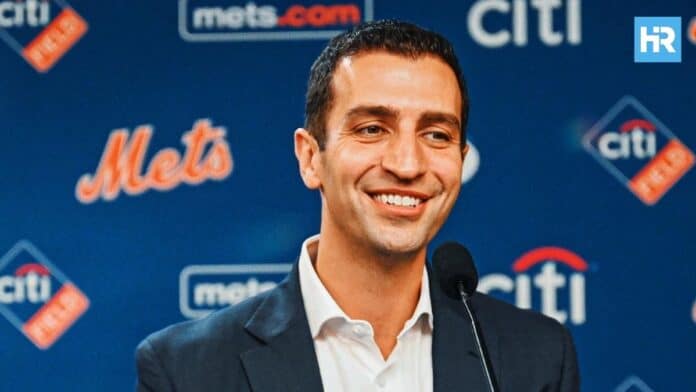David Stearns made several trades to improve the Mets’ roster for a playoff push. By focusing on multiple small moves, he aimed to fix weaknesses and increase team depth.
- David Stearns made several small trades to improve the Mets’ roster instead of one big move.
- Key changes were made to the bullpen to fix its problems and increase reliability.
- New players were added to give the Mets more options and better overall depth.
Stearns’ Smart Trades Boost Mets’ Playoff Hopes
David Stearns decided to improve the Mets’ roster with several smaller trades instead of going for flashy, big-name players.
Unlike the 2015 trade for Yoenis Cespedes or the 1969 deal for Donn Clendenon, Stearns chose to address multiple needs with several targeted moves.
Heading into a game against Minnesota at Citi Field, the Mets were tied for the second wild-card spot.
Stearns acted to fill various holes, especially in the bullpen, to keep the team competitive.
Stearns’ Key Moves to Fix the Mets’ Struggling Bullpen
Stearns identified the team’s weaknesses and worked to fix them. The Mets’ bullpen struggled for over two months, causing them to lose several games.
From May 1 to June 2, they lost six games they were leading after eight innings. Even during a winning streak, the bullpen’s ERA was almost 8.00.
This hurt their playoff chances. Stearns responded by getting four new bullpen pitchers: Phil Maton from the Rays, Ryne Stanek, Tyler Zuber from the Rays, and Huascar Brazoban from the Marlins.
- Phil Maton: Maton allowed just one run in seven appearances, promising to improve the bullpen.
- Ryne Stanek: Though his first outing was rough, Stanek has been a reliable reliever, especially with the Houston Astros.
- Tyler Zuber and Huascar Brazoban: Both were added to provide more depth and options, aiming to boost the bullpen’s performance.
Stearns Strengthens Mets’ Rotation and Bench
Beyond the bullpen, Stearns recognized the need for starting depth.
Paul Blackburn was acquired from the A’s with hopes he could replicate Chris Bassit’s successful transition from Oakland to Flushing two years prior.
This move aimed to solidify the starting rotation, offering more stability and options for the remainder of the season.
The Mets also addressed their left-handed bench options. DJ Stewart, previously the best lefty off the bench, was sent to Triple-A Syracuse.
In his place, Jesse Winker was acquired from the Nationals, which was seen as a clear upgrade and a reliable option moving forward.
When Will Stearns Make a Bold Move?
Despite these changes, some wonder when Stearns will make a more aggressive move.
Other teams, like the San Diego Padres and Los Angeles Dodgers, made big trades, raising expectations.
The Padres paid a high price for Tanner Scott and Jason Adam, while the Dodgers took risks on players like Jack Flaherty.
These bold moves are different from Stearns’ cautious strategy. Stearns’ reputation for careful moves rather than headline-grabbing trades has left some fans wondering when the Mets will make a decisive move to boost their chances.
His careful approach has kept the farm system strong, but the need for a game-changing trade remains.
Stearns’ Strategy Boosts Mets’ Present and Future
Stearns’ approach balances keeping a strong minor league system with meeting immediate needs. The challenge is knowing when to trade prospects for impactful players.
While the current strategy focuses on small improvements, the right opportunity could lead to a bigger move in the future.
In summary, David Stearns’ strategy aimed to address the Mets’ immediate needs without hurting the team’s future. The series of smaller trades provided depth and options, especially in the bullpen, while considering the team’s future.
The question of when to make a bold move remains, but for now, the Mets are set to compete with a stronger roster.






